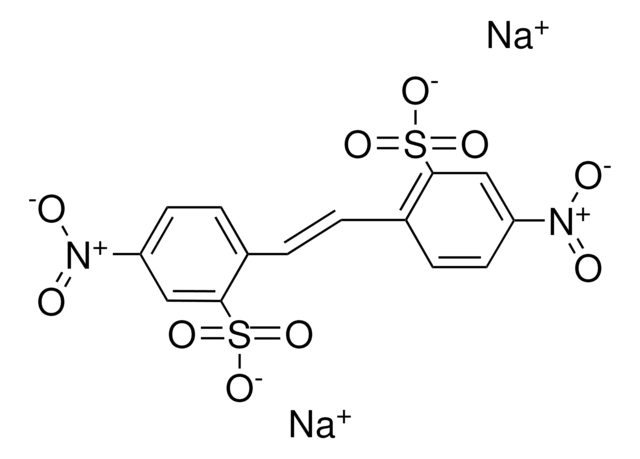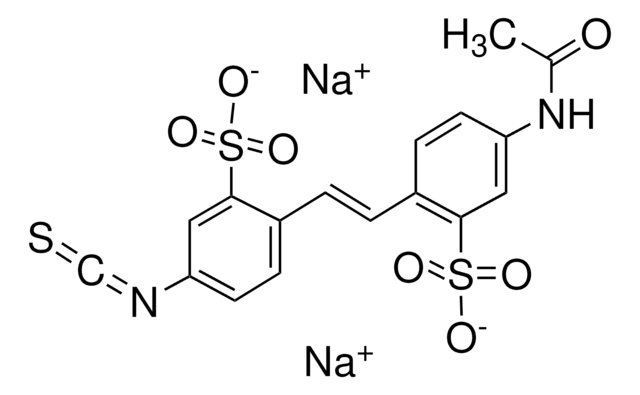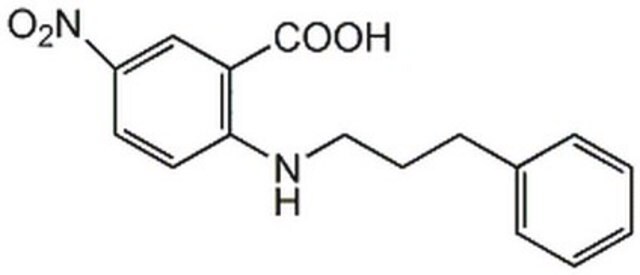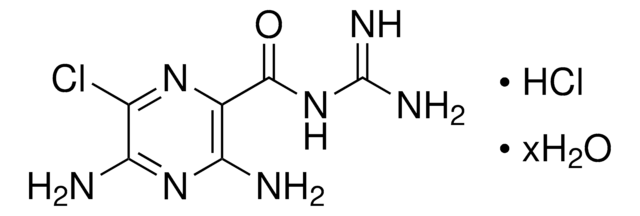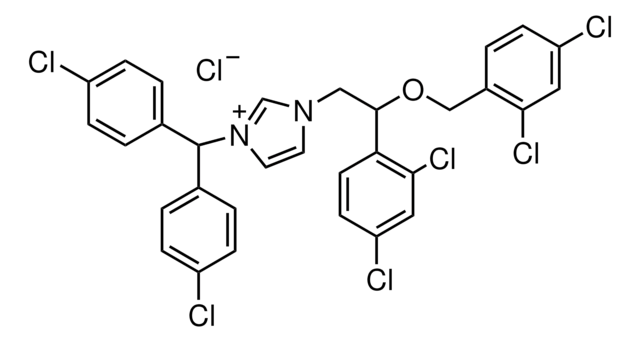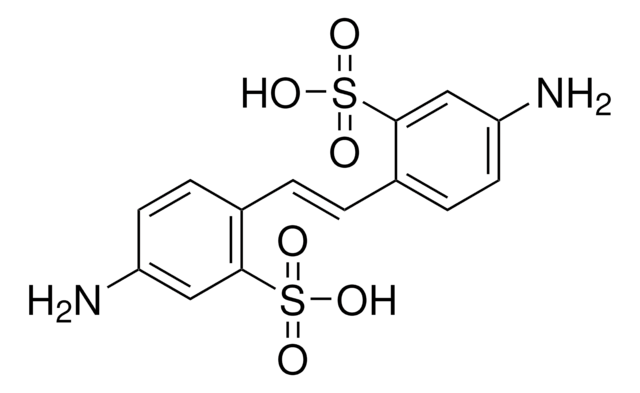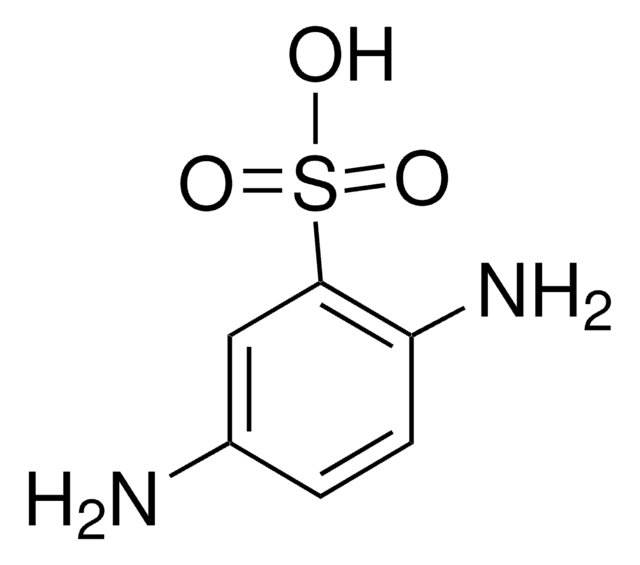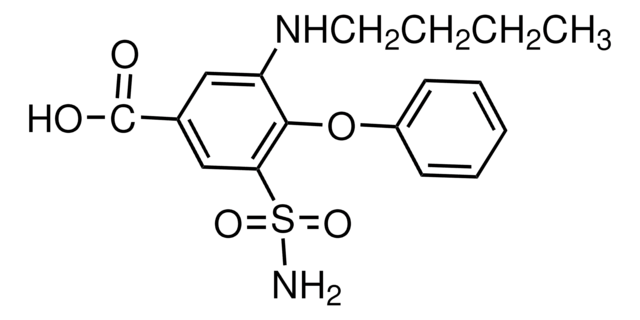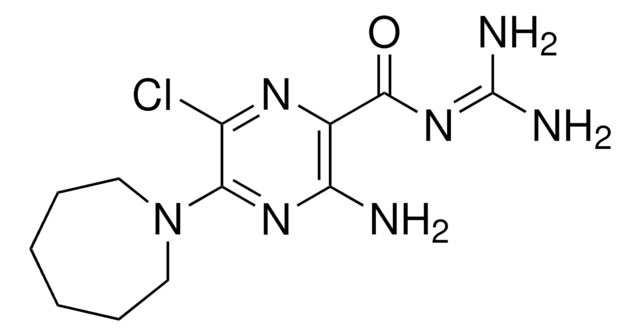D3514
4,4′-Diisothiocyanatostilbene-2,2′-disulfonic acid disodium salt hydrate
≥80% (elemental analysis), powder
Synonyme(s) :
DIDS, Disodium 4,4′-diisothiocyanatostilbene-2,2′-disulfonate
About This Item
Produits recommandés
Qualité
for analytical purposes
Essai
≥80% (elemental analysis)
Forme
powder
Pertinence de la réaction
reagent type: cross-linking reagent
Couleur
yellow
Solubilité
0.1 M potassium bicarbonate: 50 mg/mL
Température de stockage
2-8°C
Chaîne SMILES
[Na+].[Na+].[O-]S(=O)(=O)c1cc(ccc1\C=C\c2ccc(cc2S([O-])(=O)=O)N=C=S)N=C=S
InChI
1S/C16H10N2O6S4.2Na/c19-27(20,21)15-7-13(17-9-25)5-3-11(15)1-2-12-4-6-14(18-10-26)8-16(12)28(22,23)24;;/h1-8H,(H,19,20,21)(H,22,23,24);;/q;2*+1/p-2/b2-1+;;
Clé InChI
GEPAYBXVXXBSKP-SEPHDYHBSA-L
Vous recherchez des produits similaires ? Visite Guide de comparaison des produits
Application
- as band3 protein inhibitor in rabbits(19)
- for the inhibition of bicarbonate transporters in brain slice tissue(20)
- as HCO3-/Cl- exchanger (anion exchanger) in embryos(21)
Actions biochimiques/physiologiques
Mention d'avertissement
Danger
Mentions de danger
Conseils de prudence
Classification des risques
Eye Irrit. 2 - Resp. Sens. 1 - Skin Irrit. 2 - STOT SE 3
Organes cibles
Respiratory system
Code de la classe de stockage
11 - Combustible Solids
Classe de danger pour l'eau (WGK)
WGK 3
Point d'éclair (°F)
Not applicable
Point d'éclair (°C)
Not applicable
Équipement de protection individuelle
dust mask type N95 (US), Eyeshields, Faceshields, Gloves
Faites votre choix parmi les versions les plus récentes :
Déjà en possession de ce produit ?
Retrouvez la documentation relative aux produits que vous avez récemment achetés dans la Bibliothèque de documents.
Les clients ont également consulté
Notre équipe de scientifiques dispose d'une expérience dans tous les secteurs de la recherche, notamment en sciences de la vie, science des matériaux, synthèse chimique, chromatographie, analyse et dans de nombreux autres domaines..
Contacter notre Service technique
